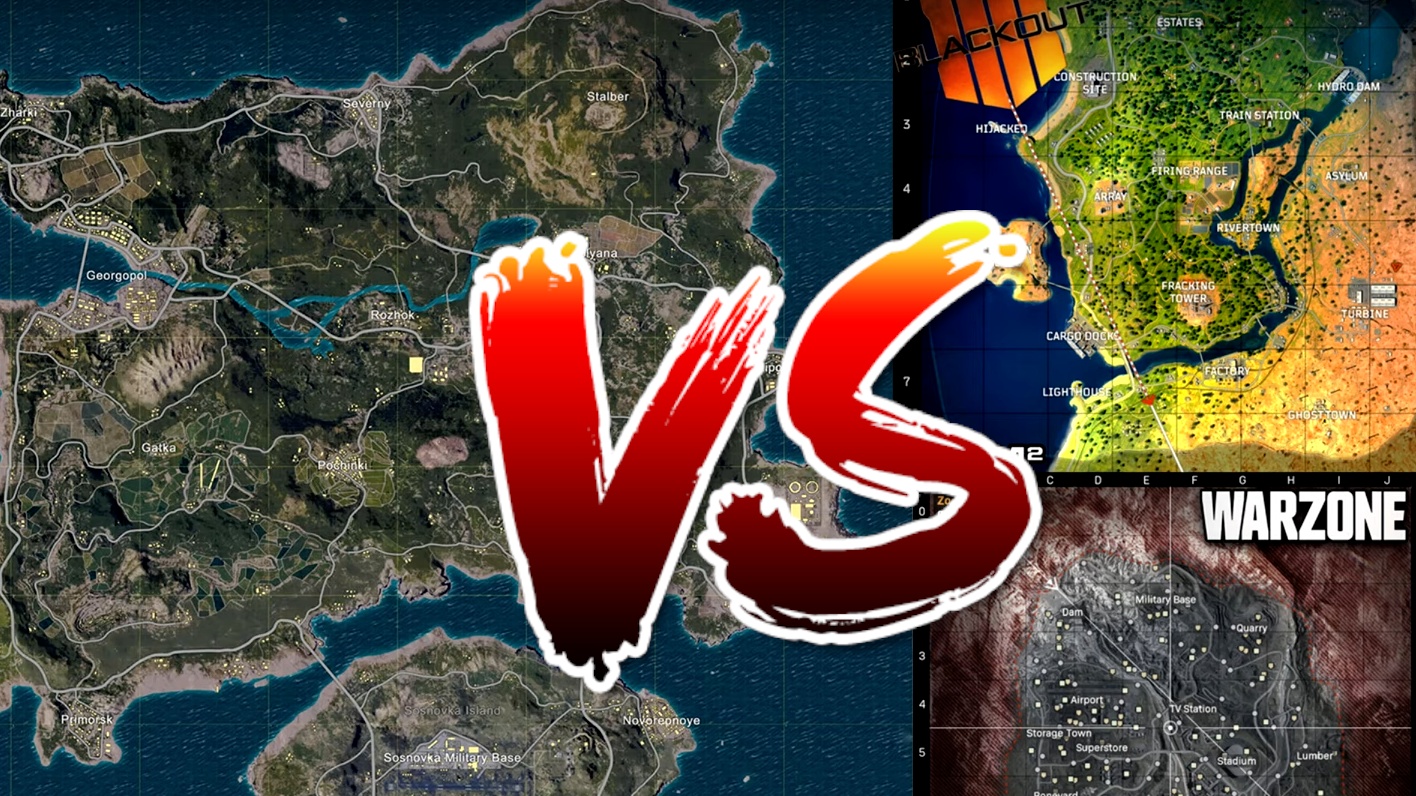In a new video, the CoD expert TheXclusiveAce measured the Warzone map and compared it with other Battle Royale maps. The result of the YouTuber: The card is much smaller than you would think straight away! We'll get to the point of exactly what the result looks like and why the numbers deviate so much from the perceived truth.
How Big Is Warzone Really?
When measuring the Verdansk map, TheXclusiveAce calculates a total size of 14 square kilometers. Of which are only 7.84 square kilometers actually playable Area. Warzone looks surprisingly compact on paper for a Battle Royale card. The comparison with the previous map from Black Ops 4 is particularly surprising.
more on the subject
Opinion: Warzone has to be more like Fortnite!
How does Warzone compare?
The results of the YouTuber quickly make it clear: blackout off Call of Duty: Black Ops 4 is indeed larger than the new Warzone map
Here is an overview of the values:
- Warzone from CoD Modern Warfare: round 8th Square kilometre playing area
- Blackout from CoD Black Ops 4: round 12th Square kilometre playing area
- Erangel from PUBG: round 64 square kilometers playing area
- Fortnite's map: round 7 square kilometers playing area
TheXclusiveAce is shocked in the video. If he had been asked beforehand which CoD map would be the largest, he would have answered »Warzone« immediately and without hesitation. But why does Warzone seem so huge to players despite its smaller area?
Why does the result feel wrong?
Even in the perception of many players, Warzone is likely to be larger than the naked figures suggest. TheXclusiveAce provides a few explanations for this:
- Complexity: The blackout map is much simpler in comparison and fills the space between settlements and buildings with a lot of open terrain and forests.
- Development: Warzone, on the other hand, connects its hotspots with significantly more buildings, streets, towers, ruins and other elements, which makes the map appear more organic.
- Skyscraper: There are more and much taller buildings in Warzone, which means that verticality plays a greater role and built-up areas such as downtown appear much denser.
- Perspective: The proportions on the Warzone map are different, which is why the environment is perceived by gamers much more extensively.
- Movement: The movement speed is significantly higher in blackout on foot, which is why you can overcome distances faster than in Warzone.
more on the subject
Warzone test: We change our rating
How was it measured?
To determine the size of the Warzone map, TheXclusiveAce relied on the ping system, which conveniently shows the distance to the marker in meters. Here are his steps to the result:
- The straight road next to Boneyard serves as the starting point for the measurement
- The wayout brings the Youtuber to 375 meters per grid line
- Extrapolated to the real playing area, the edge length is 2,800 meters
The blackout map was a bigger challenge, because according to TheXclusiveAce there are no waypoints or precise calculations by the community. Here's how the Youtuber went:
- A video with a 1,000-meter sniper kill serves as the starting point
- The exact position of shooter & target results in 500 meters per grid line
- Extrapolated to the real playing area, the edge length is 3,500 meters
![https://www.gamestar.de/ "data-sizes =" auto "data-src =" https://2images.cgames.de/images/gamestar/238/philipp-elsner_6031101.jpg "data-img-format = "238" data-img-id = "6031101" class = "author lazyload" src = "https://static.cgames.de/gs_cb/assets/core/images/placeholder.gif]()
Editor's assessment: I was actually very surprised by the results myself. After several rounds in CoD: Warzone appeared with the map significantly larger than blackout, although smaller than Erangel in PUBG. But what the results also show: size is not everything! I would even say that size is completely irrelevant if you don't fill the area with meaningful content.
And here Warzone is clearly doing a better job than its Battle Royale competition: the different areas flow seamlessly into one another and appear as if from a single source. All buildings are unique and no copy & paste set pieces with the same layout. And no matter where I am, I always see at least three interesting points around me. I am rather happy when a few square kilometers of empty and empty forest area are missing.
Table of Contents










